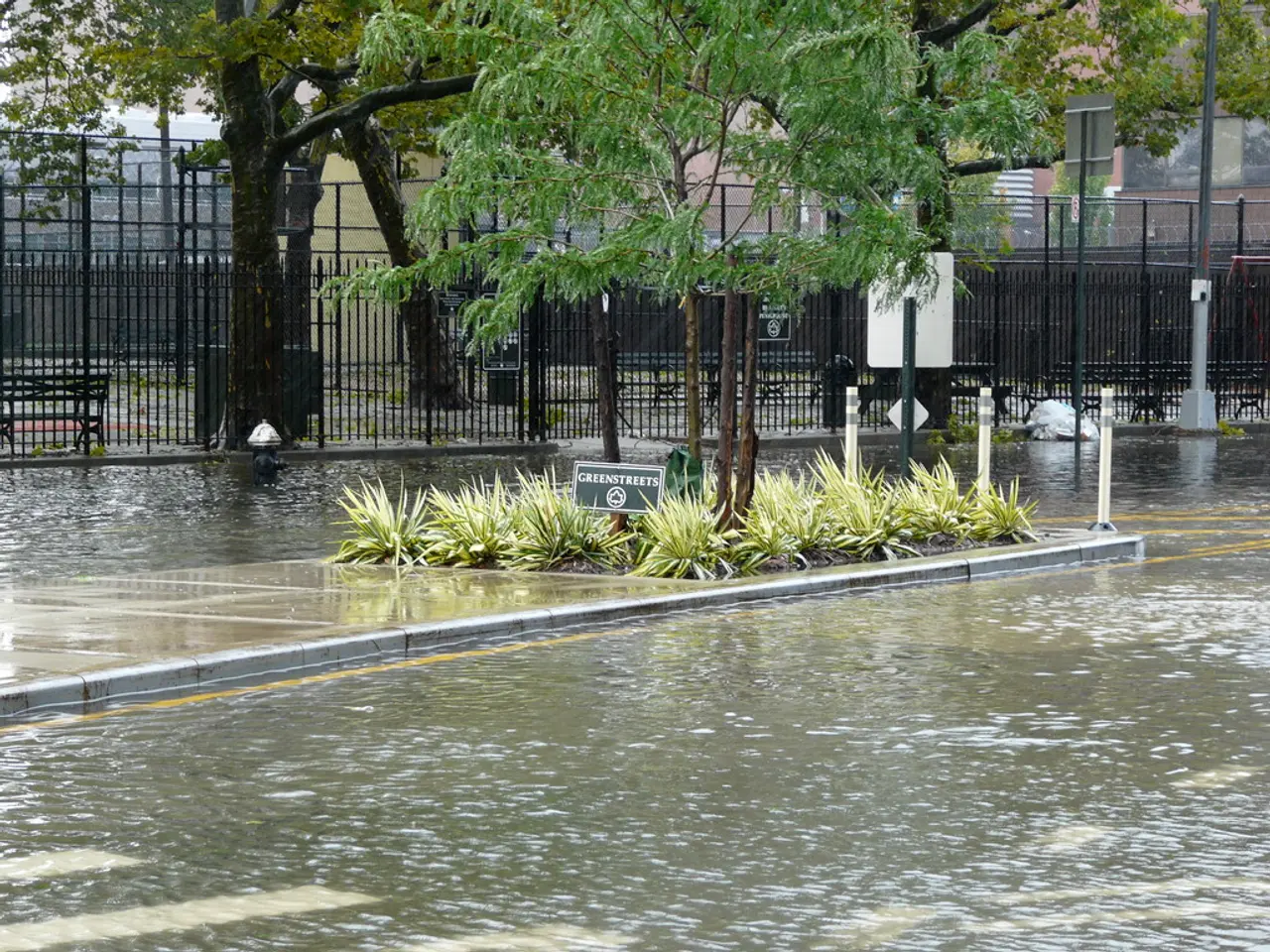Discover the method for constructing a soakaway - an economical and efficient solution to safeguard your home and driveway from waterlogging.
==============================================
A soakaway is an essential component of sustainable drainage systems, helping to manage surface water by allowing it to percolate back into the earth in a measured way. This article provides a step-by-step guide on how to build a soakaway, including site selection, percolation testing, and installation.
Site Selection
Choose a location away from buildings and structures to prevent water damage and ensure safety. A soakaway should be at least 5 meters away from a property or a retaining wall.
Percolation Testing
To determine soil suitability for a soakaway before building, assess the soil's infiltration capacity and drainage characteristics. This typically involves performing percolation (permeability) tests and considering soil texture. Dig a test hole similar to the proposed soakaway depth and fill it with water. Measure the rate at which water soaks into the soil. According to national sustainable drainage standards, soils with an infiltration capacity greater than 1 x 10⁻⁶ m/s are considered suitable for soakaways or infiltration systems.
Soil Texture and Composition
Soils with high clay content (low permeability) are less suitable for soakaways. Ideally, sandy or gravelly soils with good percolation are preferred. If soils are fine-textured or have high clay content, soakaway efficiency decreases.
Guidance on Sizing
The soakaway's size and design depend on the drainage area and soil infiltration rates. For example, for an impermeable area of 100 m², a soakaway or permeable surface area of about 20 m² might be required if soil infiltration permits.
Installation
- After excavating, remove any stones, roots, or other debris from the base of the hole and level it out as much as possible.
- Add a layer of pea shingle to the base of the hole, level it out, and compact it.
- Install a geotextile membrane in the dug-out hole before lowering the soakaway crates. Some soakaway crates have clips that allow them to attach together, while others may require cable ties.
- Lower the soakaway crates into the hole and ensure the geotextile membrane covers the outward faces of the crates, as well as the pipe entry point.
- Add a pea shingle side fill around the soakaway structure to prevent it from moving if the ground is disturbed.
- After the side fill is in place, add a layer of pea shingle over the top of the crates and then top it with a layer of soil. The soil layer should be roughly 4cm thick, but check what is recommended by the crate manufacturer.
Additional Considerations
You should also ensure proper installation with materials such as rubble and protective fabric to maintain soakaway function. Avoid locations where waterlogging or poor drainage causes persistent standing water.
Maintenance
A silt trap installed before and above the soakaway crates can extend the lifespan of the soakaway and help it stay efficient.
Size and Capacity
The most common size of a soakaway for residential use is 1 cubic meter, and soakaway crates have a 300 litre capacity. They can be stacked together if needed.
For a driveway soakaway, you may need to dig down at least 1.5 meters. A soakaway of this size is sufficient to drain a roof area of approximately 50 square meters under normal conditions.
In summary, testing soil permeability via a percolation test is the fundamental method to determine soakaway suitability before construction. The national standards and industry guidance recommend minimum infiltration rates and design ratios to ensure effective runoff infiltration and compliance.
- Proper home planning should include budgeting for essential tools like a shovel, tape measure, and a bucket for soil testing, along with purchasing suitable materials such as pea shingle and soakaway crates.
- To comply with regulations and maintain a sustainable lifestyle, it's crucial to adhere to guidelines when building a soakaway, ensuring a suitable distance from homes, structures, and drains.
- When choosing a location for your soakaway, avoid home-and-garden elements like flower beds, vegetable patches, or storage sheds to prevent disruptions during construction.
- Incorporate the soakaway installation process into your overall home-building or renovation project, considering factors like the roof area and its contribution to storm water runoff.
- A well-maintained soakaway can be an efficient part of your sustainable drainage systems, extending its lifespan with regular checks and cleaning, especially after heavy rainfall.
- To maximize the effectiveness of your soakaway, consult local home-and-garden experts or a professional guide to ensure compliance with regulations, preferred soil types, and ideal garden layout around the soakaway.




